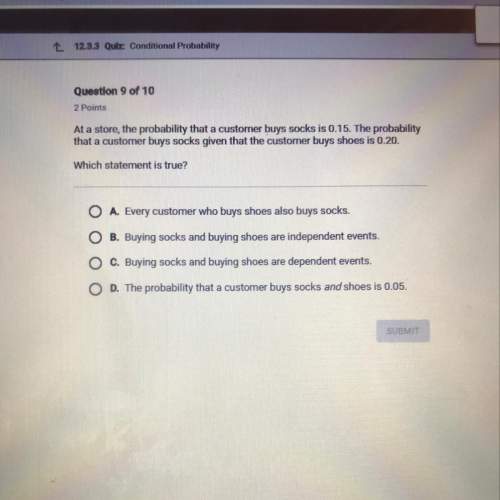
Mathematics, 18.02.2020 01:17 anishivaturi123
Consider a router buffer preceding an outbound link. In this problem you will use Little's formula, a famous formula from queuing theory. Let N denote the average number of packets in the buffer plus the packet being transmitted. Let a denote the rate of packets arriving at the link. Let d denote the average total delay (i. e., the queuing delay plus the transmission delay) experienced by a packet. Little's formula is N = a · d. Suppose that on average, the buffer contains 105 packets (in addition to the packet currently being transmitted) and the average queuing delay is 1.75 sec The links transmission rate is 60 packets/sec. Using Little's formula, what is the average packet arrival rate, assuming there is no packet loss?

Answers: 3


Other questions on the subject: Mathematics




Mathematics, 21.06.2019 23:40, nightmarewade03
Determine the standard form of the equation of the line that passes through (-2,0) and (8,-5)
Answers: 1
You know the right answer?
Consider a router buffer preceding an outbound link. In this problem you will use Little's formula,...
Questions in other subjects:

Mathematics, 06.10.2021 18:20

Mathematics, 06.10.2021 18:20

Computers and Technology, 06.10.2021 18:20


History, 06.10.2021 18:30

English, 06.10.2021 18:30







